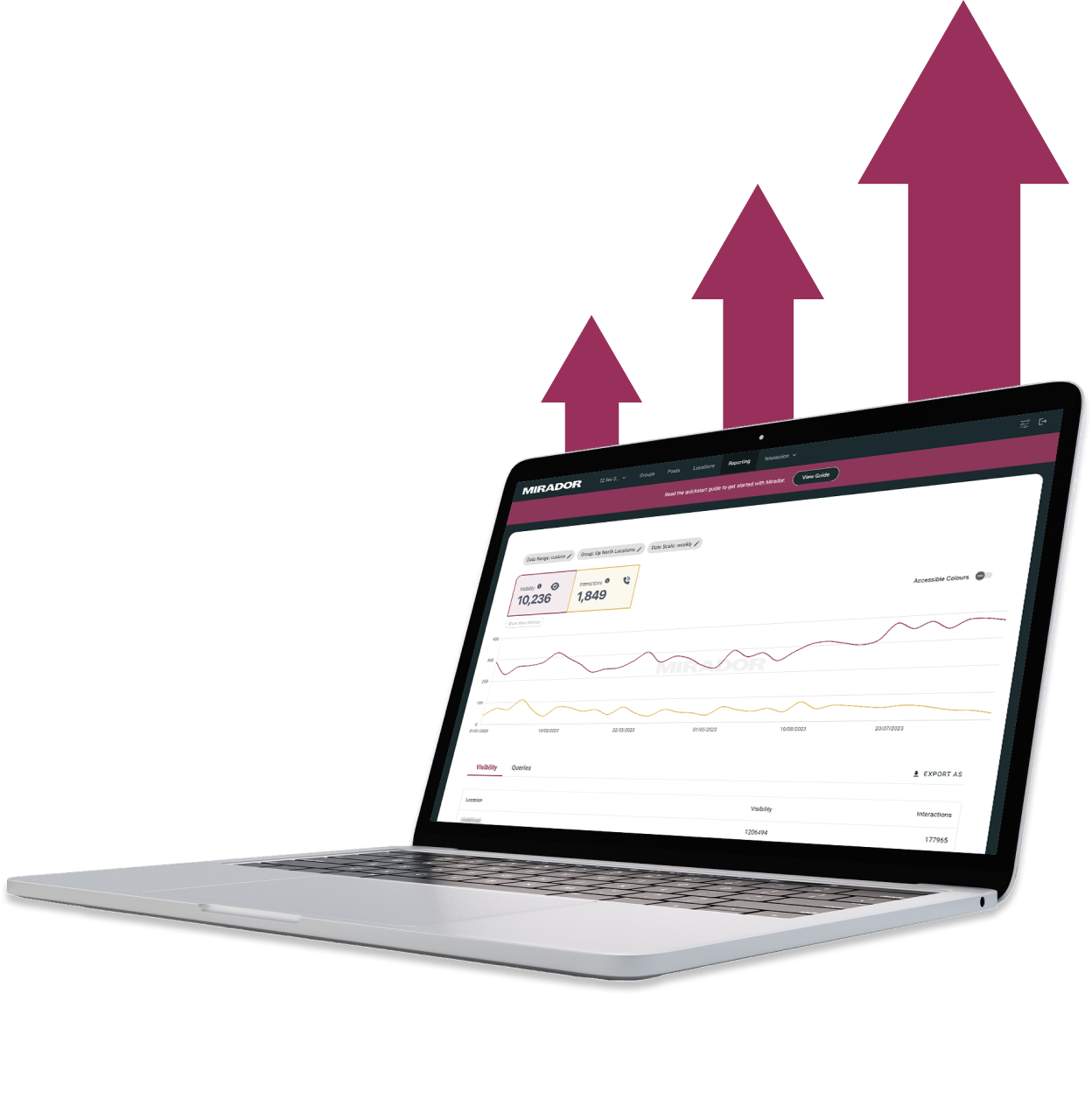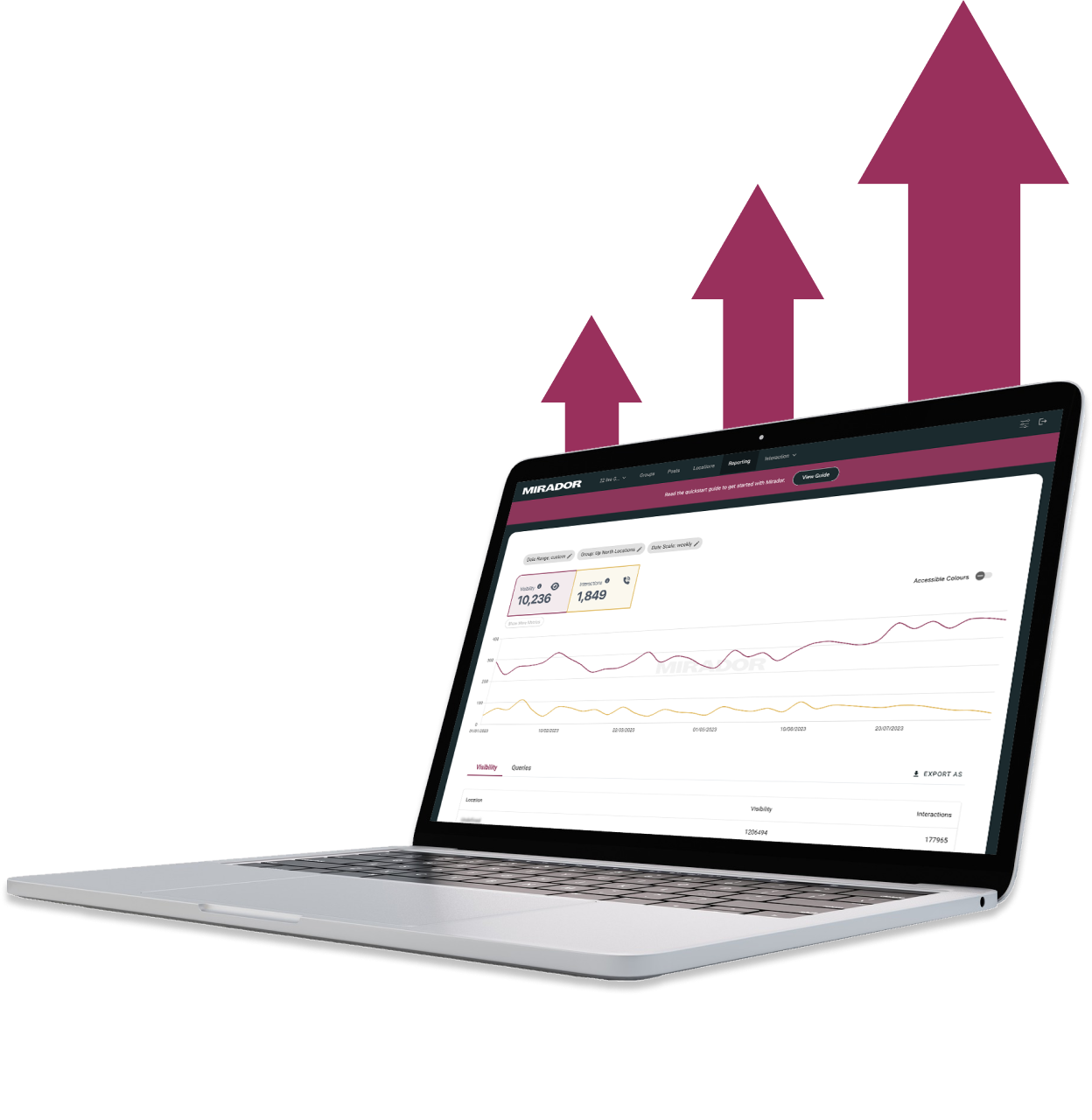Migrating from Webflow to WordPress
Migrating from Webflow to WordPress: A Comprehensive Guide
Understanding Webflow and WordPress
Webflow and WordPress are both popular platforms for creating and managing websites. Each has its unique features and capabilities.
Webflow is a cloud-based website builder that allows users to create responsive websites without coding. It offers a visual interface that enables users to design and build websites using drag and drop elements. Webflow also offers hosting services and supports eCommerce functionality.
WordPress, on the other hand, is an open-source content management system (CMS) that powers over 40% of all websites on the internet. WordPress offers a wide range of features and plugins that allow users to create and manage websites of all sizes and complexity levels. WordPress also supports eCommerce functionality and offers a wide range of hosting options.
One of the key differences between Webflow and WordPress is that Webflow is a closed system, while WordPress is an open-source platform. This means that while Webflow offers a user-friendly interface, it does not allow users to customize the platform beyond the features and functionalities that it offers. WordPress, on the other hand, allows users to customize the platform to suit their specific needs.
Another difference between the two platforms is that Webflow is a proprietary platform, while WordPress is an open-source platform. This means that while Webflow is owned and controlled by a single company, WordPress is developed and maintained by a community of developers and contributors. This also means that WordPress has a larger community of users, developers, and contributors, which results in a wider range of plugins, themes, and support options.
Overall, both Webflow and WordPress have their own strengths and weaknesses. The choice between the two platforms depends on the user's specific needs and preferences. For users who want a user-friendly and visually appealing platform, Webflow may be the better option. For users who want a more customizable and scalable platform, WordPress may be the better option.
Why Migrate from Webflow to WordPress
Migrating from Webflow to WordPress can offer several benefits, depending on your website needs. Here are a few reasons why you might consider making the switch:
Control
While Webflow is a user-friendly platform that helps users create professional websites with an intuitive visual editor, it has its limitations. WordPress, on the other hand, is an open-source platform that gives you complete control over your website. With WordPress, you have access to a vast library of plugins and themes that can help you customize your site to meet your specific needs.
Flexibility
WordPress is highly customizable and can be extended to meet almost any need. With over 50,000 plugins available in the WordPress repository, you can add features and functionality to your site with just a few clicks. This flexibility makes WordPress an ideal platform for businesses and organizations that need a website that can grow and evolve with their needs.
Customization Options
WordPress offers a wide range of customization options that allow you to create a website that reflects your brand and meets your specific needs. With WordPress, you have complete control over the design and layout of your site, and can easily customize it to match your brand's look and feel.
Budget
While Webflow offers a free plan, it has limited features and functionality. To access the full range of features, you'll need to upgrade to a paid plan, which can be expensive. WordPress, on the other hand, is free to use and offers a wide range of free and premium themes and plugins that can help you create a professional-looking website on a budget.
In summary, while Webflow is a great platform for creating and managing websites, WordPress offers greater control, flexibility, customization options, and budget-friendliness. Migrating from Webflow to WordPress can help you take your website to the next level and meet your specific needs.
Preparation for Migration
Before migrating from Webflow to WordPress, it is essential to prepare for the process. This involves ensuring that you have everything you need to make the transition as smoothly as possible. Here are some key things to consider when preparing for migration:
Planning
Planning is a crucial aspect of any website migration. Before starting the migration process, it is essential to create a detailed plan that outlines the steps you need to take to ensure a smooth transition. This plan should include details on how to export your content from Webflow, choosing a WordPress theme, configuring your WordPress permalinks, and pointing your domain to WordPress.
Backup
Before starting the migration process, it is essential to back up your data. This ensures that you have a copy of your website in case anything goes wrong during the migration process. You can back up your data using Webflow's built-in backup feature or by using a third-party backup tool.
Domain
If you are migrating your website to a new domain, it is essential to update your domain's DNS settings to point to your new WordPress hosting provider. This ensures that your website is accessible to your visitors after the migration process is complete.
Hosting Provider
Choosing a reliable WordPress hosting provider is essential for a successful migration. A managed WordPress hosting provider can handle most of the technical aspects of the migration process, making it easier for you to focus on other aspects of your website.
Managed WordPress Hosting
Managed WordPress hosting providers offer a range of benefits that make the migration process easier. These benefits include automatic backups, automatic updates, and expert support. Choosing a managed WordPress hosting provider can help ensure that your website migration is a success.
In summary, preparing for migration involves planning, backing up your data, updating your domain's DNS settings, choosing a reliable WordPress hosting provider, and considering managed WordPress hosting. By taking these steps, you can ensure a smooth transition from Webflow to WordPress.
Exporting Content from Webflow
Exporting content from Webflow is an essential step in migrating to WordPress. The process involves exporting the content from the Webflow dashboard and then importing it into WordPress.
To export content from Webflow, users can go to the Webflow dashboard and select the collection they want to export. Collections are a group of similar items, like blog posts or products. Once the collection is selected, users can click on the "Export" button and choose the type of export they want.
Webflow supports several export types, including CSV and CMS export/import. The CSV export is a simple way to export content in a spreadsheet format, while the CMS export/import is a more advanced option that allows users to export content with all its metadata and relationships intact.
It is important to note that some content, like images and files, may need to be exported separately. Users can download these files from the Webflow dashboard and then upload them to WordPress manually.
Overall, exporting content from Webflow is a straightforward process that requires only a few clicks. By following the steps outlined in this section, users can ensure that their content is exported correctly and ready for import into WordPress.
Importing Content to WordPress
After exporting the content from Webflow, the next step is to import it into WordPress. This is where the WP All Import plugin comes into play. WP All Import is a powerful plugin that allows you to import any XML or CSV file into WordPress.
To get started, you will need to install and activate the WP All Import plugin. Once activated, you can then upload your CSV file by going to WP All Import > New Import. From there, you can select the CSV file you exported from Webflow and choose the post type you want to import the content to.
After selecting the post type, you will then be taken to the mapping screen. Here, you can map the fields in your CSV file to the corresponding fields in WordPress. This is an important step as it ensures that your content is imported correctly.
WP All Import also allows you to import images and other media files. To do this, you will need to make sure that the file paths in your CSV file match the file paths in WordPress. WP All Import will automatically import the images and other media files and attach them to the corresponding post.
Once you have mapped all the fields and settings, you can then run the import. This may take some time depending on the size of your CSV file and the number of posts you are importing.
Overall, WP All Import makes it easy to import content from Webflow to WordPress. With its powerful mapping and import features, you can ensure that your content is imported correctly and efficiently.
Transferring Web Pages
When migrating from Webflow to WordPress, one of the most crucial steps is transferring your web pages. This process involves exporting your web pages from Webflow and importing them into WordPress. Here are some tips to ensure a smooth transfer:
Exporting Web Pages
To export your web pages from Webflow, go to the Webflow Designer and select the pages you want to export. Then, click on the Export button and choose the HTML option. This will download a ZIP file containing the HTML, CSS, and JavaScript files for your web pages.
Importing Web Pages
To import your web pages into WordPress, you can use a plugin like All-in-One WP Migration or WP Migrate DB. These plugins allow you to upload your ZIP file and import your web pages directly into WordPress.
Custom CSS
If you have custom CSS on your web pages, you will need to transfer this as well. You can copy and paste your custom CSS into the WordPress Customizer or use a plugin like Simple Custom CSS to add your CSS to WordPress.
Page Builder
If you used a page builder in Webflow to create your web pages, you will need to recreate your pages in WordPress using a page builder plugin like Elementor or Beaver Builder. These plugins allow you to create custom layouts and designs for your web pages without any coding knowledge.
Overall, transferring web pages from Webflow to WordPress can be a bit of a challenge, but with the right tools and techniques, it can be done smoothly and efficiently.
Migrating Images and Media Files
One of the most important aspects of migrating from Webflow to WordPress is ensuring that all images and media files are transferred correctly. This includes not only the images used on individual pages, but also any galleries, videos, and audio files.
To begin the migration process, it is recommended to use an auto-upload images plugin. This will automatically upload all images from Webflow to WordPress, saving time and effort. Once the plugin is installed, it can be configured to automatically upload images to a specific folder or gallery page.
For galleries, it is important to ensure that all images are properly organized and labeled. This will help to maintain the structure of the gallery and ensure that all images are displayed correctly. Additionally, it is recommended to use a plugin to create and manage galleries in WordPress.
When migrating videos and audio files, it is important to ensure that they are properly formatted and optimized for WordPress. This includes ensuring that the file type is supported by WordPress and that the file size is optimized for the web. Additionally, it is recommended to use a plugin to manage and display videos and audio files in WordPress.
Overall, migrating images and media files from Webflow to WordPress can be a complex process. However, with the right tools and techniques, it can be done efficiently and effectively. By following best practices and using plugins to automate the process, website owners can ensure that their images and media files are transferred correctly and that their website maintains its structure and functionality.
Customizing Design and Themes
One of the primary benefits of using WordPress is the ability to customize the design and themes of your website. WordPress offers a vast library of themes that can be used to create a unique and visually appealing website. These themes are designed by professionals and can be easily customized to fit your brand and style.
When migrating from Webflow to WordPress, it is essential to choose a theme that matches the design of your Webflow website. WordPress offers a wide range of themes that can be used to create a similar look and feel. You can also customize themes to fit your specific needs by changing the colors, fonts, and layout of your website.
WordPress themes are available in a variety of categories, including business, portfolio, blog, and e-commerce. Each theme comes with a set of templates that can be used to create different pages on your website. For example, a business theme may come with templates for the homepage, about us, services, and contact us pages.
Customizing the design and themes of your website in WordPress is easy and straightforward. You can use the built-in WordPress Customizer to make changes to your website's design, including changing the background color, font size, and font color. You can also add custom CSS to your website to make more advanced design changes.
In addition to the themes available in the WordPress library, there are also many third-party themes available for purchase. These themes offer more advanced customization options and can be used to create a truly unique website. When choosing a third-party theme, it is essential to ensure that it is compatible with the latest version of WordPress.
Overall, customizing the design and themes of your website in WordPress is a straightforward process that can be done by anyone, regardless of their technical expertise. With a wide range of themes and customization options available, you can create a website that is unique and visually appealing.
Setting Up SEO and Permalinks
When migrating from Webflow to WordPress, it is important to set up SEO and permalinks properly to ensure that your website's search engine ranking is not negatively affected.
Permalinks are the permanent URLs of your pages and posts. By default, WordPress uses a plain permalink structure that is not SEO-friendly. You can change the permalink structure to make it more readable and include relevant keywords.
To change the permalink structure, go to Settings > Permalinks in the WordPress dashboard. From there, you can choose from several common permalink structures or create a custom structure. It is recommended to use the "Post name" structure, which includes the title of your posts in the URL.
In addition to setting up permalinks, optimizing your website for SEO is crucial for improving your website's visibility on search engines. WordPress has several built-in SEO features, but you can also use plugins such as Yoast SEO or All in One SEO Pack to further enhance your website's SEO capabilities.
These plugins allow you to set up meta titles and descriptions for your pages and posts, create XML sitemaps, and analyze your website's SEO performance. By optimizing your website for SEO, you can increase your website's visibility on search engines and attract more organic traffic.
In conclusion, setting up SEO and permalinks properly is crucial when migrating from Webflow to WordPress. By following best practices and using SEO plugins, you can improve your website's search engine ranking and attract more organic traffic.
Migrating E-commerce Features
When migrating from Webflow to WordPress, it is essential to consider how to migrate e-commerce features. E-commerce is a crucial aspect of any online business, and it is essential to ensure that the migration process does not disrupt the e-commerce functionality of the website.
One of the primary considerations when migrating e-commerce features is ensuring that product information is accurately transferred from Webflow to WordPress. This includes product descriptions, images, prices, and any other relevant information. It is also important to ensure that product categories and tags are correctly migrated to WordPress.
Another critical aspect of migrating e-commerce features is ensuring that payment gateways and shipping options are correctly configured in WordPress. This includes setting up payment gateways such as PayPal, Stripe, and others and configuring shipping options such as flat rate, free shipping, and others.
In addition to product information and payment gateways, it is also important to ensure that any other e-commerce features such as discounts, coupons, and taxes are correctly migrated to WordPress. This ensures that the website's e-commerce functionality is not disrupted, and customers can continue to purchase products seamlessly.
Overall, migrating e-commerce features from Webflow to WordPress requires careful consideration and planning. It is essential to ensure that all product information, payment gateways, and other e-commerce features are accurately migrated to WordPress to avoid any disruptions to the website's e-commerce functionality.
Testing and Launching the Website
Once the migration process is complete, it is crucial to test the website thoroughly to ensure that everything is working correctly before launching it. Comprehensive testing involves evaluating the functionality of plugins and themes, identifying potential issues or bugs, and optimizing the site for optimal performance.
One of the essential steps in testing a website after migration is to check if all the pages are loading correctly and if the links are working correctly. It is also crucial to ensure that the website's design, layout, and functionality are consistent across all devices, including desktops, tablets, and mobile phones.
Another important aspect of testing a website is to evaluate the performance of the site. This involves checking the website's loading speed, image optimization, and overall responsiveness. Slow loading speeds can lead to a poor user experience, which can negatively impact the website's traffic and search engine rankings.
Once the website has been thoroughly tested and optimized, it is time to launch it. Before launching the website, it is essential to make sure that the hosting provider is reliable and can handle the website's traffic. It is also crucial to ensure that the website's domain name is properly configured and pointing to the correct server.
In conclusion, testing and launching a website after migration from Webflow to WordPress is a critical step in ensuring a seamless transition. By thoroughly testing the website and optimizing its performance, website owners can provide their users with a positive user experience and improve their search engine rankings.
Post-Migration Tasks
Once the migration from Webflow to WordPress is complete, there are a few post-migration tasks that need to be performed to ensure the website is fully functional and secure.
Domain Name and DNS Settings
After migrating to WordPress, it is important to update the domain name and DNS settings to point to the new WordPress site. This can be done by updating the DNS records in the domain registrar's control panel. It is recommended to keep the same domain name as it helps to maintain the search engine rankings and brand identity of the website.
Redirects
Redirects are necessary to ensure that visitors who access the old Webflow site are automatically redirected to the new WordPress site. This can be done by setting up 301 redirects from the old URLs to the new URLs. This helps to maintain the search engine rankings and also ensures that visitors are not lost during the migration process.
Security
Security is a crucial aspect of any website, and it is important to ensure that the new WordPress site is secure. This can be done by installing security plugins, updating WordPress and plugins regularly, and using strong passwords. It is also recommended to use SSL certificates to encrypt the data transmitted between the website and the visitors.
Overall, post-migration tasks are important to ensure that the new WordPress site is fully functional and secure. By following these steps, website owners can ensure a smooth transition from Webflow to WordPress.
Get started⚡
Supercharge your webflow website
- 🖥️ Unlimited Webflow Development
- 🛠️ Unlimited Tasks (1 active)
- ⏰ 2-3 Day Turnaround
- 📞 Bi-Weekly Calls
- 🤝 Dashboard & Slack Collaboration
- 🔄 Cancel/Pause Anytime
- 🎨 Webflow Dev + Figma Design
- 🛠️ Unlimited Tasks & Projects (1 active)
- ⏰ 1-3 Day Turnaround
- 📞 Bi-Weekly Calls
- 🤝 Dashboard & Slack Collaboration
- 🔄 Cancel/Pause Anytime
10% OFF
£9.45k billed quarterly
- 🖥️ Unlimited Webflow Development
- 🛠️ Unlimited Tasks (1 active)
- ⏰ 2-3 Day Turnaround
- 📞 Bi-Weekly Calls
- 🤝 Dashboard & Slack Collaboration
- 🔄 Cancel/Pause Anytime
10% OFF
£10.8k billed quarterly
- 🎨 Webflow Dev + Figma Design
- 🛠️ Unlimited Tasks & Projects (1 active)
- ⏰ 1-3 Day Turnaround
- 📞 Bi-Weekly Calls
- 🤝 Dashboard & Slack Collaboration
- 🔄 Cancel/Pause Anytime
- 💸 Competitive pricing
- 📉 More hours = lower price
- 🎨 Design and development
- 📊 Updates via our dashboard

Recommend him to anyone!"
Thanks to Hilvy's expertise and hard work, Mirador Local now has a modern, user-friendly website that perfectly reflects our brand and enhances the overall user experience. I highly recommend them to anyone seeking a talented and reliable designer for their next project."

Gerry White
Global Growth @ Mirador

They didn't stop until the site perfectly matched our design vision, even going past our project timeline to ensure this level of quality. We would definitely work with them again!"

John Outwater
Data Visualization at Renoster

Their communication throughout the project was great and I received frequent updates and the ability to give feedback. It felt like a team effort and the results were fantastic. Hilvy did a great job at bring our idea to life. Would highly recommend"

Marcus Vitelli
Brand Executive at Flexciton

He really knows the ins and outs of Webflow - it's no wonder that he's a certified Webflow Expert! I'm looking forward to the day when I get to work with him again.

Diana Donaldson
CEO, Be Indigo
-p-500.png)
The team was also very responsive and willing to help, will highly recommend for your website projects! :)"


My website continually evolves to meet the demands of my clients and my offerings, which is fantastic. Hilvy also brings fresh ideas and insights on how to enhance and grow in alignment with my objectives and business requirements. I'm excited to see how this new phase unfolds."

Karin Young
Psychotherapist, Karin Counselling

They also remained really patient with us throughout and gave us great advice on how to set ourselves up for the long term, and then also gave us some valuable training on Webflow, upskilling our team. We had a clear way of providing changes and feedback via a tool he suggested which worked really well, the process was smooth. If you're a start up or scale up looking for an excellent web developer to turn your ideas into reality, look no further!!"

Ben Leftley
Senior Delivery Manager at Unmind
Their excellent blend of technical and visual knowledge helped us create a fast, SEO-optimized site that looks fantastic and stays true to our brand. We would gladly hire Hilvy again!"

Eliza Gerland
Strategic Marketer @ UFODrive
Throughout the process, they patiently addressed all questions that arose during our platform transition, delivering not only an exceptional site but also tutorials on managing it."

Their design expertise is outstanding, and they were able to craft a bespoke, feature-rich website that looks fantastic and functions seamlessly. I wholeheartedly recommend Hilvy to anyone seeking webflow designers who truly understand their craft!"

Taita Ngetich
CEO @ Synnefa


Miles Owen
Their Webflow development expertise is top-notch, and they effortlessly keep up with the dynamic nature of early-stage startups."

Growth at Briink


Marketing Lead @ Provenance






%201.svg)











